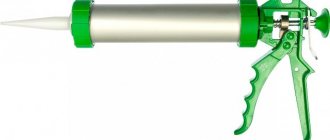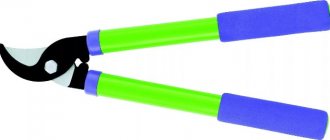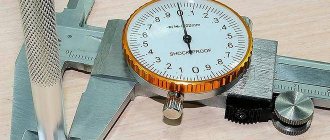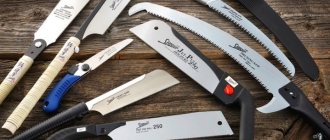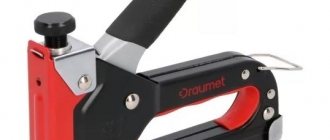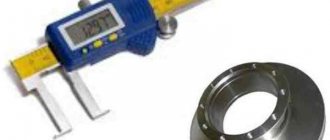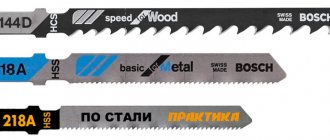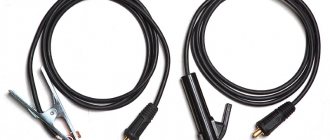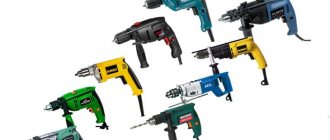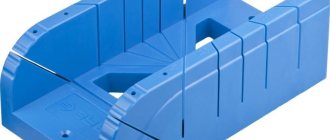For professional builders and surveyors, a level is a must-have device.
It allows you to perform measurements and calculations with high accuracy.
A huge number of types of this device allows you to choose the appropriate option for most tasks, from simple home repairs to the creation of large architectural projects.
Purpose of the level
One of the most important geodetic works carried out during the construction of any objects is leveling.
For these purposes, an appropriate tool is used - a level.
The purpose of this operation is to determine the difference in heights of specific points on the ground, as well as to study landforms.
Levels are used for:
- design and creation of high-precision geodetic structures;
- installation of technical equipment and structures, for example, for installing power transmission poles;
- decorating the area, leveling large areas;
- predicting the amount of subsidence of any buildings;
- construction work indoors, for example, installation of floors and ceilings.
In everyday life, levels are often used when renovating premises.
For these purposes, there is a separate type of device, which is often called laser levels.
They project laser beams onto flat surfaces and are great for marking corners.
Among other things, the use of a laser level ensures the accuracy of laying tiles and any material where right angles and lines are required.
For this reason, the device is also used for wallpapering, where it is necessary to maintain strictly vertical joint lines.
The level will also be useful for an electrician.
With its help, you can clearly position the location of sockets, switches, safety panels at the same level from the floor, or relative to the horizon.
Also in everyday life, the simplest hydrostatic levels are used, operating on the principle of two communicating vessels with liquid.
How to use a laser level
Taking measurements with a laser level is easy. But before using it, you need to study the instructions. It is supplied with each device by the manufacturer.
How to measure distance
Distance
Most models of levels of this type are equipped with rangefinders. This allows you to build a plane and calculate the distance automatically. If you don't have a rangefinder, you'll have to use a tape measure.
Use for flooring
A laser level is used when installing floor joists. It is enough to start the device. A zero level will appear around the perimeter.
Application when working with walls
A laser level can be used to control the process of laying a brick wall, installing a shelf, or a lighting fixture. It is also used to level railings on stairs. The list of works for which the level will be useful is wide. The device allows you to accurately determine the position of an object relative to a plane.
Error of laser levels
High precision laser tool. But it is better to check its accuracy before use. There are different methods for this. The easiest way to do this is in a small room that you can measure yourself by hand. This will allow us to correlate both results and clarify the calculations.
Error check
The laser level is placed in the center of two walls and turned on. The location of the laser cross is marked on the wall. Next, the device is rotated 180 degrees. Make a note on the wall. Then you need to move the level to any of the walls and install it at a distance of 70 cm. Make the same marks. Measure the distance between the marked points. Subtract one distance from another. Compare the obtained result with the specified accuracy. If the data does not exceed the accuracy specified in the manual, then the laser device is working correctly.
Video instructions for working with a laser level
Device and characteristics
The simplest level is an optical device consisting of a bubble level in the form of a cylinder, a telescope with magnification and a sighting axis.
The pipe is adjusted by the operator depending on the position of the object being examined.
To perform measurements, such a level works in tandem with a thread rangefinder and a rod with centimeter divisions.
Digital models are similar in operating principle and structure to optical ones, however, all calculations are performed automatically, which eliminates operator errors, and are then displayed on the screen.
The operating principle of laser levels is different, as is their design.
The laser beam reaching the surface of the object determines the existing deviations.
Today such a tool is the most common.
To ensure that deviations are clearly visible, the levels have a bright red beam, which is clearly visible indoors.
To work in open space, a device with a green beam is used.
This color, due to its wavelength, is better perceived by the human eye, and is also more powerful and long-range.
The instruments can be mounted on a tripod with a graduated dial, which allows approximate measurement of horizontal angles.
GOST
For optical levels, the GOST 10528-90 standard was developed, which specifies information about the devices, main parameters and types, technical requirements and test methods.
This standard replaced the outdated GOST 10528-76.
According to GOST, each optical level must belong to one of the following classes:
- Highly accurate - the square error per 1 km of travel does not exceed 0.5 mm.
- Accurate – the error does not exceed 3 mm.
- Technical – error no more than 10 mm.
Material
Tripods for levels are most often made of aluminum, since this material is light in weight, but at the same time has high strength.
Such characteristics have a positive effect on the ease of transportation of equipment.
Also, the material for tripods is wood, due to which their cost is higher, but their stability is also better.
Mini tripods of compact size are made primarily of fiberglass.
The levels themselves must be highly durable.
For this reason, to make the case of high-quality models, mainly metal or special plastic is used.
Adjustment elements, such as screws, can be plastic or metal.
Dimensions and weight
Depending on the type of level, as well as the material of manufacture, the approximate weight is from 0.4 to 2 kg.
Optical models weigh on average 1.2 – 1.7 kg.
When using additional equipment, such as a tripod, the weight increases to 5 kg or more.
Approximate dimensions of optical levels:
- Length: 120 – 200 mm;
- Width: 110 – 140 mm;
- Height: 120 – 220 mm.
Definition and classification
A level is a measuring device that is used to calculate the difference in the levels of points in space in relation to a conventionally specified surface. They are often used by topographers or surveyors when studying the relief, as well as by builders when it is necessary to strictly observe certain parameters when constructing or repairing objects.
These devices are needed wherever it is necessary to perfectly level the surface vertically or horizontally or to give a certain object or structure a certain level of slope.
They are classified according to two criteria: the principles of their operation and the accuracy of measurement.
There are three groups of devices based on the accuracy of reading parameters:
- high-precision - a square error in measurements per square meter of double stroke is allowed in the amount of 0.2−0.5 mm;
- accurate - the permissible square error is 0.5−1 mm per square meter of double stroke, respectively;
- technical - the error rate is 2−10 mm, respectively.
To perform basic terrain markings and determine differences in relief, as well as its binding to the desired points, you can use simple technical devices. But more accurate devices will be required to determine parameters at all stages of construction work.
As for the classification of levels according to the principle of operation , they are as follows:
- Geometric. Such devices emit a sighting beam and bring it to a horizontal position. With their help, the difference in the position of points on a particular area is established. These points must be marked using special slats. Geometric leveling can be simple or complex. In the first case, it is carried out from one point, in the second - from several that change progressively;
- Trigonometric. In another way, they are also called theodolites, and they are used to establish between elevation marks using an inclined beam. The angle of inclination and distance are measured between the device and the control point, and then, according to the formula, the required value is determined. This is quite difficult; over long distances or rough surfaces the result may be inaccurate;
- Hydrostatic. These devices consist of two vessels with liquid connected to each other. The difference in heights at different points is determined by the level of the liquid. Full vessels are connected to each other by means of a sleeve and a hose and placed at control points. The amount of excess of one point over another is determined by the difference between the height of the liquid column in each of the vessels. This method, although highly accurate, is limited by the length of the hose or sleeve;
- Optical-mechanical. With the help of such devices, the parameters of the points are determined using a light beam and slats marked in a special way. The devices have an optical tube for observations, as well as a device for leveling strictly horizontally. But to carry out measurements with them, you need to have a number of specialized skills and knowledge;
- Laser. These are high-precision devices in which a narrow beam is projected onto the surface using a laser. They are very easy to use; with their help you can work not only with points, but also with planes;
- Digital. Optical or laser levels that display information in digital form are capable of storing it, and in some cases even partially analyzing it. These devices are accurate and can be operated by one person, but are expensive and susceptible to mechanical damage.
There are also special methods of leveling , they are carried out using devices such as:
- radars;
- barometers;
- echolocators;
- stereoscopes, etc.
However, all these methods are almost never used for domestic needs.
Types of levels, their capabilities and price
By design, the level can be:
Optic
It is used for various geodetic works, during the construction and repair of roads.
Designed to determine the difference in height between points, as well as the distance between them.
Determination of angles of inclination and height differences is carried out using a graduated scale printed on the glass.
To correctly install the device relative to the horizon, a bubble level is used.
To dampen vibrations, as well as to ensure stability, such levels are equipped with a magnetic damper or an air compensator.
The cost starts from 8 thousand rubles.
Digital (electronic)
A modern geodetic instrument that takes readings with high accuracy using a special staff.
The design simultaneously combines an optical level, an electronic storage device, as well as built-in software that processes data.
The electronic level works quickly and eliminates operator errors.
To take measurements, you need to focus on the staff, and when you press a button, the device will display all the necessary values on the screen.
The cost of the simplest models starts from 80 thousand rubles.
Laser
Allows you to construct vertical, horizontal and inclined planes with high accuracy.
Some devices have a plumb line function, which allows you to measure angles of 45° and 90°.
Another name for this type of level is a laser construction level, due to its scope of application.
Laser levels, in turn, are divided into the following classes:
Positional (linear)
The most common type of level.
Through lenses and prisms, the light flux is refracted, and as a result, static lines are built, oriented in space with high accuracy.
Such plane builders have an opening angle of up to 110° - 130°.
They are used mainly indoors.
The cost starts from 2 thousand rubles.
More professional models will cost 7–8 thousand rubles.
Rotary
It is used mainly on open construction sites, as it has a long range, which is reflected in its cost.
The level forms a point due to the beam, which, through the rapid rotational movement of the mechanism, outlines the plane.
Cost – from 7 thousand rubles.
In sunny weather, the line outlined by the moving beam is often impossible to see.
For this reason, models with a radiation receiver, which is a separate electronic device, are used.
When the laser is pointed at the photocell of such a receiver, the device emits an audio or visual signal.
Spot
Emits a direct light beam, which, when intersecting with any object, forms a point on it.
The price of professional models starts from 6 thousand rubles.
A laser level that has the ability to project beams in all three planes is called a 3D level.
According to the method of setting the tool (type of alignment), laser levels are divided into:
• Manual – adjustment is performed by the operator using ordinary bubble-type levels located on the housing. Precise positioning is performed by screw verniers.
• Self-leveling - adjustments are made through various built-in mechanisms.
Another name is automatic level.
Thus, the electronic leveling system independently compensates for up to 15% of the error in deviation from the horizon by analyzing information from special sensors and subsequent adjustment by servos.
The pendulum compensation mechanically compensates for deviations of up to 5% using a built-in permanent magnet.
• Combined – uses several alignment methods simultaneously.
There are two types of laser levels based on the color of the beam:
• With green beam.
Used for outdoor work as the beam wavelength is 532 nm.
This color is not only better perceived by the eye, but is also capable of constructing planes at a distance of up to 1 km.
In bright sunlight, the beam is often impossible to see.
• With a red beam – used for indoor work.
The wavelength of 635 nm, depending on the specific model, provides a range of 10 – 500 m.
The laser device requires a power source to operate.
Most often it is a built-in or removable battery that requires periodic recharging.
Small devices that can fit in a pocket use disposable batteries to operate.
Most rarely you can find network options, the functioning of which requires their connection to a household electrical network.
Hydrostatic leveling is another accurate method of measuring elevation differences, used primarily in construction.
It requires a hydraulic level - a long transparent hose filled with liquid.
The measuring process is based on Pascal's law of communicating vessels and allows one to estimate the heights of objects that are not in direct visibility.
How to use a level and staff: measuring and recording values
The calculation of data through the use of a measuring instrument of this type is performed using a special algorithm. It is very important to determine the reference point to which orientation will be made during measurement. Correction of the location of other objects is performed based on data about the original position.
The rod should be installed at the highest point corresponding to the plane being measured. After this, you should point the instrument at its scale, which will allow you to calculate the required values.
The rod should be installed at the highest point that corresponds to the plane being measured.
Correction of the position of the geodetic rod is also included in the complex of manipulations necessary during the work process. To do this, this element must be moved up or down. This is done until the integer on the staff converges with the point in the lens corresponding to the intersection of the lines. The value that was obtained should be recorded in the log.
Now you need to move the staff to another measuring point. The new position allows the next value on the scale to be calculated. It must also necessarily coincide with the intersection of lines in the instrument lens. Then the two values determined from the cross points must be combined, after which the lower edge of the staff will correspond to the position to which the orientation is made.
It is important to know that the mark is most often placed on a special structure called a benchmark. Construction cords are pulled between these components, which allows you to get a clear picture of the future construction event. Benchmarks are actively used when pouring the foundations of buildings or when erecting walls.
The clearest data can be obtained using laser levels. Levels of this type also contain slats, which facilitate the conduct of appropriate measurement surveys.
The staff must be moved up or down until the integer number on the staff aligns with the dot in the lens.
Thanks to the level, it becomes possible to determine and set the necessary points over huge areas. The range of other measuring instruments is much greater.
How to choose a level?
When choosing a household laser level, there is no point in spending money on an expensive device, since even budget models will allow you to mark inside rooms of any size.
For this purpose, the minimum beam length will be sufficient.
In addition, the smaller the room, the smaller the angular errors will be.
It is enough to inspect the case for damage, and also check the laser level with a bubble analogue.
When choosing semi-professional models, as well as instruments for professional construction and geodetic activities, important parameters that you should pay attention to will be:
• Number of rays. To the standard two rays that build lines vertically and horizontally, several additional ones are added. As a rule, they are located on the sides of the device.
• Glow range. If this parameter, which is indicated by the manufacturer, is 30 meters, the rays will shine over long distances. But it should be remembered that when the specified range threshold is exceeded, their thickness increases, which leads to a decrease in the accuracy of the marks.
• Availability of a self-leveling system. This will save time on precise positioning of the device relative to the horizon.
• Beam scanning angle. It’s good if this parameter is 110° - 130°.
• Batteries. The simpler they are, the better. Ideally, the device will require two or three AAA batteries to operate. A rechargeable battery is also a good option.
• Additional accessories.
Some models are supplied with protective laser glasses.
They not only protect the eyes from the effects of radiation from devices, but in them the beam itself is better visible in any weather.
For comfortable work, you also need a tripod, especially in cases where the device needs to be raised to a certain height.
To fix the level in various places, a “clothespin” type mount is required.
A more convenient option would be one with a universal magnetic mount.
A device with a rich set of components will cost more, but if you buy accessories separately, their cost will be even higher.
• The professional level is equipped with additional adjustments.
In particular, models with mini-tripods, which are located directly in the body, have smooth aiming screws, which allow you to configure the device as correctly as possible.
Among other things, levels must have reliable protection from dust and other external factors.
The degree of protection can be determined by the markings.
IP54 is considered standard - a moisture-resistant device that is suitable for working in the rain and on a dusty construction site.
To protect against falling, levels must have a shockproof housing and damper pads.
Some models are equipped with internal shock absorbers that protect electronic components from damage.
Correct focusing of the measuring device
The next step in setting up a device used in construction is adjusting the optical lens. To carry out this operation, devices are equipped with special elements that allow precise adjustment of the working part.
These include:
- eyepiece rings;
- adjusting screw;
- guide screw.
The first element is the most important in the design of the level. What is the eyepiece ring for? It is designed to focus the eye on the lines that form the grid. This marking consists primarily of horizontal contours, but it also includes one vertical. Measurements are taken exclusively along the longest line located in the horizontal plane.
The screw that is used for focusing allows you to get a clear image of the object being measured. Let's take a closer look at how the setup should be done. A grid of lines should appear in the eyepiece. After a clear image appears, you need to turn the screw that is responsible for focusing. The manipulation is performed until the picture on which the threads are superimposed becomes clear. This kind of correction is made before each measurement data is taken.
Image clarity can be obtained by rotating the screw responsible for focusing.
On a note! When focusing, the vertical line should be strictly in the center of the geodetic ruler. By following the instructions, you can accurately adjust the device and get an answer to the question of how to use the level and staff. Video tutorials that contain a detailed description of setting up and taking data are recommended for viewing.
In order for the calculation accuracy to be maximum, it is also worth knowing how the data is corrected after it has been taken. Proper use of such a device allows you to plan a construction event.
What is a level?
The level is used when measuring a horizontal or vertical surface. Geological exploration measures a conventionally specified plane on which conventionally specified points are determined.
Before use, it is important to know what a level is; you can determine its purpose using the following parameters:
- Transom-type pipe structure is used in construction and small measurement objects.
- Installations with a tilt level compensation mechanism.
Laser level
Laser levels are becoming increasingly popular in construction. It is used in all directions, from pouring concrete to the need to hang shelves evenly.
The components of the design are a laser emitter, with the help of which the beam finds the center and is positioned on the plane.
View
A level is a device for measuring height differences between several points in an open area. Levels are also called laser levels, which are used to mark planes for interior and, less commonly, exterior work.
A rangefinder is a device for measuring the distance to a certain object, calculating the volume or area of a room. The range finder allows you to calculate the amount of material to finish the room.
A receiver is a device that allows you to increase the range of a laser level and rangefinder.
Optical level
Laser level- Laser rangefinder
- Ultrasonic range finder
Level - what is it, how to use it correctly, what is it for?
For professional builders and surveyors, a level is a must-have device.
It allows you to perform measurements and calculations with high accuracy.
A huge number of types of this device allows you to choose the appropriate option for most tasks, from simple home repairs to the creation of large architectural projects.
Purpose of the level
One of the most important geodetic works carried out during the construction of any objects is leveling.
For these purposes, an appropriate tool is used - a level.
The purpose of this operation is to determine the difference in heights of specific points on the ground, as well as to study landforms.
Levels are used for:
- design and creation of high-precision geodetic structures;
- installation of technical equipment and structures, for example, for installing power transmission poles;
- decorating the area, leveling large areas;
- predicting the amount of subsidence of any buildings;
- construction work indoors, for example, installation of floors and ceilings.
In everyday life, levels are often used when renovating premises.
For these purposes, there is a separate type of device, which is often called laser levels.
They project laser beams onto flat surfaces and are great for marking corners.
Among other things, the use of a laser level ensures the accuracy of laying tiles and any material where right angles and lines are required.
For this reason, the device is also used for wallpapering, where it is necessary to maintain strictly vertical joint lines.
The level will also be useful for an electrician.
With its help, you can clearly position the location of sockets, switches, safety panels at the same level from the floor, or relative to the horizon.
Also in everyday life, the simplest hydrostatic levels are used, operating on the principle of two communicating vessels with liquid.
Device and characteristics
The simplest level is an optical device consisting of a bubble level in the form of a cylinder, a telescope with magnification and a sighting axis.
The pipe is adjusted by the operator depending on the position of the object being examined.
To perform measurements, such a level works in tandem with a thread rangefinder and a rod with centimeter divisions.
Digital models are similar in operating principle and structure to optical ones, however, all calculations are performed automatically, which eliminates operator errors, and are then displayed on the screen.
The operating principle of laser levels is different, as is their design.
The laser beam reaching the surface of the object determines the existing deviations.
Today such a tool is the most common.
To ensure that deviations are clearly visible, the levels have a bright red beam, which is clearly visible indoors.
To work in open space, a device with a green beam is used.
This color, due to its wavelength, is better perceived by the human eye, and is also more powerful and long-range.
The instruments can be mounted on a tripod with a graduated dial, which allows approximate measurement of horizontal angles.
GOST
For optical levels, the GOST 10528-90 standard was developed, which specifies information about the devices, main parameters and types, technical requirements and test methods.
This standard replaced the outdated GOST 10528-76.
According to GOST, each optical level must belong to one of the following classes:
- Highly accurate - the square error per 1 km of travel does not exceed 0.5 mm.
- Accurate – the error does not exceed 3 mm.
- Technical – error no more than 10 mm.
Material
Tripods for levels are most often made of aluminum, since this material is light in weight, but at the same time has high strength.
Such characteristics have a positive effect on the ease of transportation of equipment.
Also, the material for tripods is wood, due to which their cost is higher, but their stability is also better.
Mini tripods of compact size are made primarily of fiberglass.
The levels themselves must be highly durable.
For this reason, to make the case of high-quality models, mainly metal or special plastic is used.
Adjustment elements, such as screws, can be plastic or metal.
Dimensions and weight
Depending on the type of level, as well as the material of manufacture, the approximate weight is from 0.4 to 2 kg.
Optical models weigh on average 1.2 – 1.7 kg.
When using additional equipment, such as a tripod, the weight increases to 5 kg or more.
Approximate dimensions of optical levels:
- Length: 120 – 200 mm;
- Width: 110 – 140 mm;
- Height: 120 – 220 mm.
Types of levels, their capabilities and price
By design, the level can be:
Optic
It is used for various geodetic works, during the construction and repair of roads.
Designed to determine the difference in height between points, as well as the distance between them.
Determination of angles of inclination and height differences is carried out using a graduated scale printed on the glass.
To correctly install the device relative to the horizon, a bubble level is used.
To dampen vibrations, as well as to ensure stability, such levels are equipped with a magnetic damper or an air compensator.
The cost starts from 8 thousand rubles.
Digital (electronic)
A modern geodetic instrument that takes readings with high accuracy using a special staff.
The design simultaneously combines an optical level, an electronic storage device, as well as built-in software that processes data.
The electronic level works quickly and eliminates operator errors.
To take measurements, you need to focus on the staff, and when you press a button, the device will display all the necessary values on the screen.
The cost of the simplest models starts from 80 thousand rubles.
Laser
Allows you to construct vertical, horizontal and inclined planes with high accuracy.
Some devices have a plumb line function, which allows you to measure angles of 45° and 90°.
Another name for this type of level is a laser construction level, due to its scope of application.
Laser levels, in turn, are divided into the following classes:
Positional (linear)
The most common type of level.
Through lenses and prisms, the light flux is refracted, and as a result, static lines are built, oriented in space with high accuracy.
Such plane builders have an opening angle of up to 110° - 130°.
They are used mainly indoors.
The cost starts from 2 thousand rubles.
More professional models will cost 7–8 thousand rubles.
Rotary
It is used mainly on open construction sites, as it has a long range, which is reflected in its cost.
The level forms a point due to the beam, which, through the rapid rotational movement of the mechanism, outlines the plane.
Cost – from 7 thousand rubles.
In sunny weather, the line outlined by the moving beam is often impossible to see.
For this reason, models with a radiation receiver, which is a separate electronic device, are used.
When the laser is pointed at the photocell of such a receiver, the device emits an audio or visual signal.
Spot
Emits a direct light beam, which, when intersecting with any object, forms a point on it.
The price of professional models starts from 6 thousand rubles.
A laser level that has the ability to project beams in all three planes is called a 3D level.
According to the method of setting the tool (type of alignment), laser levels are divided into:
• Manual – adjustment is performed by the operator using ordinary bubble-type levels located on the housing. Precise positioning is performed by screw verniers.
• Self-leveling - adjustments are made through various built-in mechanisms.
Another name is automatic level.
Thus, the electronic leveling system independently compensates for up to 15% of the error in deviation from the horizon by analyzing information from special sensors and subsequent adjustment by servos.
The pendulum compensation mechanically compensates for deviations of up to 5% using a built-in permanent magnet.
• Combined – uses several alignment methods simultaneously.
There are two types of laser levels based on the color of the beam:
• With green beam.
Used for outdoor work as the beam wavelength is 532 nm.
This color is not only better perceived by the eye, but is also capable of constructing planes at a distance of up to 1 km.
In bright sunlight, the beam is often impossible to see.
• With a red beam – used for indoor work.
The wavelength of 635 nm, depending on the specific model, provides a range of 10 – 500 m.
The laser device requires a power source to operate.
Most often it is a built-in or removable battery that requires periodic recharging.
Small devices that can fit in a pocket use disposable batteries to operate.
Most rarely you can find network options, the functioning of which requires their connection to a household electrical network.
Hydrostatic leveling is another accurate method of measuring elevation differences, used primarily in construction.
It requires a hydraulic level - a long transparent hose filled with liquid.
The measuring process is based on Pascal's law of communicating vessels and allows one to estimate the heights of objects that are not in direct visibility.
How to choose a level?
When choosing a household laser level, there is no point in spending money on an expensive device, since even budget models will allow you to mark inside rooms of any size.
For this purpose, the minimum beam length will be sufficient.
In addition, the smaller the room, the smaller the angular errors will be.
It is enough to inspect the case for damage, and also check the laser level with a bubble analogue.
When choosing semi-professional models, as well as instruments for professional construction and geodetic activities, important parameters that you should pay attention to will be:
• Number of rays. To the standard two rays that build lines vertically and horizontally, several additional ones are added. As a rule, they are located on the sides of the device.
• Glow range. If this parameter, which is indicated by the manufacturer, is 30 meters, the rays will shine over long distances. But it should be remembered that when the specified range threshold is exceeded, their thickness increases, which leads to a decrease in the accuracy of the marks.
• Availability of a self-leveling system. This will save time on precise positioning of the device relative to the horizon.
• Beam scanning angle. It’s good if this parameter is 110° - 130°.
• Batteries. The simpler they are, the better. Ideally, the device will require two or three AAA batteries to operate. A rechargeable battery is also a good option.
• Additional accessories.
Some models are supplied with protective laser glasses.
They not only protect the eyes from the effects of radiation from devices, but in them the beam itself is better visible in any weather.
For comfortable work, you also need a tripod, especially in cases where the device needs to be raised to a certain height.
To fix the level in various places, a “clothespin” type mount is required.
A more convenient option would be one with a universal magnetic mount.
A device with a rich set of components will cost more, but if you buy accessories separately, their cost will be even higher.
• The professional level is equipped with additional adjustments.
In particular, models with mini-tripods, which are located directly in the body, have smooth aiming screws, which allow you to configure the device as correctly as possible.
Among other things, levels must have reliable protection from dust and other external factors.
The degree of protection can be determined by the markings.
IP54 is considered standard - a moisture-resistant device that is suitable for working in the rain and on a dusty construction site.
To protect against falling, levels must have a shockproof housing and damper pads.
Some models are equipped with internal shock absorbers that protect electronic components from damage.
What you need to know about levels?
• You can extend the operating time of the laser level on a single charge by turning off unused beams.
This battery saving will be especially useful for “gluttonous” rotary devices.
• Remote control support simplifies operation of the level on large construction sites.
• Optical levels, depending on the design, can produce both normal and inverted images.
For the latter, a leveling rod with inverted numbers is produced.
When carrying out high-precision measurements, slats made of a special alloy - invar - are used.
